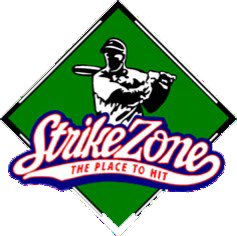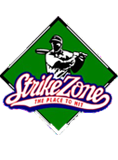
15 Feb Use Red & Green Runners for Better Defensive Decisions
Do your infielders have trouble knowing which base they should throw to with runners on base?
If so, discover a great system that will help your players figure out which base they should throw to before they blow the play!
The lefthanded slapper has really changed how fast infielders must not only make mental decisions but also physical plays. How many times have you stood in the dugout and watched one of your players field the ball, look at 2nd – no play, then look and throw to 1st – no play. Everybody’s safe!? Once is more than enough, and yet it happens a lot – a lot more than usual when the runners or the batters seem to be fast!
Before we look at a simple way to try and solve this problem let’s first look at what causes the problem:
- Too many defensive players don’t even know where the throw should go until they get the ball – which is waaay too late.
- Or else, they only go through a very general defensive laundry list: Number of Outs, Where are the Runners, Where Does the Throw Go.
Usually, that’s it. While that seems like enough for a player to make the proper decision it’s nowhere near specific enough to really help her. Consider this scenario:
- 0 outs
- Runner on 1st (Very Fast)
- Bunt Situation, Righty hitter up average speed
- Corners In
Now the ball is softly bunted to the 3rd baseman who throws to 2nd. The runner is safe and now, instead of 1 out and a runner on 1st it’s 0 outs and runners on 1st AND 2nd. So what happened? Where was the miscalculation? The 3rd baseman stayed too general in her decision on where the throw should go. She made the decision to throw to 2nd simply based on a runner at 1st and NOT on the speed of the runner compared to the speed of the batter.
So what can we do? Let’s look at a simple system we can use that will help our defense know BEFORE the play where their most likely throw, or play, should go. I call it Red and Green Runners and here’s how it works: between the Runner/s and the Batter your fielders determine which one is the fastest and which is the slowest. The faster runner becomes the RED Runner and the Slower Runner becomes the GREEN Runner. Keep in mind that even though one of the people we’re considering is the batter, she becomes a Runner to the defense as soon as she hits the ball so we’re talking about her as a Runner.
Just because a Runner has been designated as Red doesn’t mean we still can’t throw her out, but there are some rules we need to know:
- A RED Runner means Faster runner (caution! She’s much harder to get). To make a play on a Red Runner it must be a direct shot right to the defender. If it’s a slow ball, high bouncer, or the ball is bobbled then the fielder has NO chance to get a Red Runner.
- A GREEN Runner means a Slower runner. Know to Go for the Green Runner!
- A DOUBLE RED… – That means Forget it! This runner has too much speed so don’t even think about throwing, just hold the ball!
Using this Red and Green Runner scenario in our above play, the Runner at 1st would be the Red Runner since she was very fast and the batter was the Green Runner. BEFORE the ball was hit all infielders should have told themselves and each other that Red’s on 1, and Green’s Home. When the ball was bunted “softly” to the 3rd baseman it was her clue that she couldn’t get the Red Runner at 2nd so she had to get the Green Runner at 1st. Now, if the ball had been hit hard right at her then she would have had a play on the Red Runner at 2nd, but it wasn’t. When you know the Speeds and the Rules BEFORE the play, it makes the play itself pretty easy – at least as far as decision-making goes.

Now let’s look at 3 scenarios and see how helpful it is to know who the Red Runner and the Green Runners are BEFORE the play so your players have the best chance of making the right play and getting an out.
Play 1: The first picture to the right shows the RED Runner at 1st and the GREEN Runner at Home. Throw: Since the Green Runner is at home, the most likely throw is to 1st base so I’ve highlighted 1st with a yellow circle. If we look below we can see how this information can help us setup our defense to give us the best chance of getting our out at 1st without letting that Red Runner at 1st get all the way over to 3rd.

The picture to the left shows our 3B back at 3rd to prevent the Red Runner from racing around to 3rd, the 1st base and Pitcher are in for a bunt, 2B is covering 1st and SS is covering 2nd. While you don’t have to use this exact coverage, it’s just an example of how, once you know who the Red and Green Runners are it’s so much easier to position your defense to get the likely out.

Play 2 to the right is the opposite of Play 1. In this case we have our Red Runner at the plate and our Green Runner is on 1st base. With this scenario the likely play and yellow circle is now at 2nd base.

To help make the out at 2nd base easier we can use the setup on the left to position our defensive players to make it easier to have someone covering 2nd base as well as to field the most likely hit ball by this batter.
The last scenario, Play 3 below, is Slower runners on 1st and 2nd (both are Green Runners) and a faster runner at home (Red). This makes the most likely plays (or yellow circles) at either 2nd base, 3rd base or home. Don’t forget that while the Green Runners tell the defense they’re the most likely out, they can still chose to get a Red Runner out if the conditions apply: it must be a direct shot right to the defender. If it’s a slow ball, high bouncer, or the ball is bobbled then the fielder has NO chance to get a Red Runner.

Practice with your players to work out a secret code to identify which runner is the RED and which one is the GREEN. Maybe have them yell out “Red 1, Green 2” – which would mean the likely throw would go to 2nd base (2). Helping your players know which base is the most likely play BEFORE the ball is hit helps take the decision-making out of the play once the ball is hit. And then it’s simply a matter of physically executing the play.



